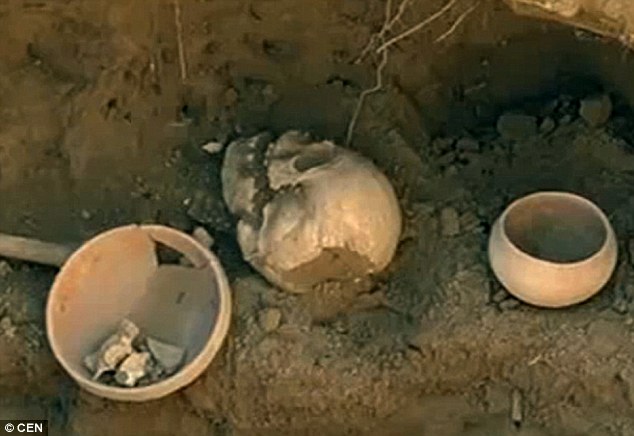“When we dug out the skull we were scared to death and even called the local police station. A bit later we realised that we should have called the local museum.” – Eltay Bazarbeav
ASCHIBULAK, KAZAKHSTAN – A man named Eltay Bazarbaev was digging a hole in his home’s basement to try and make an extra underground pantry in his yard to store more food. He labored away with a regular old shovel under the hot summer sun. He might’ve expected to find a dead mouse or two, some tree roots, or a mole-hill. What he found was human bones.
At first, when he dug up the skull, he was frightened that he’d just uncovered a years-old murder cover up. Eltay immediately called the local police department, fearing the worst. The police department arrived on the site and had a look at the bones. But, when they saw the way the body was buried and how old it looked, the police determined they ought, instead, to call in some historians. Archaeologist Arnaby Nurzhanov came in to have a look at the find, which also included some beautifully preserved clay bowls, and dated it back to the 2nd Century BC. It’s an enormously important find.
The villages’ buildings have been on the site for a long time, and the archaeologists working on the site believe that the people of Aschibulak may be sitting on top of an ancient burial ground for a tribe of warriors called the Usan: an offshoot of the Huns. The skull that Eltay found has damage which appears to be a battle wound. The entire back of the ancient man’s skull had been bashed in with a blunt object.
The Usans were originally from Central Asia, and early in their history they migrated around East Asia in three migratory stages that lasted two hundred years. They were nomads, and raised livestock (mostly horses), cultivated land, and created handcrafted pieces of art and jewelry. Their overarching people group, the Huns, do not have a known origin, but they most likely came from somewhere in the Altai Mountains and the Caspian Sea, right around modern Kazakhstan, where the skeleton of the Usan warrior was found in Eltay’s backyard. The Huns were a confederation of warrior bands that included the Usan, the Chuni, and the Vurugundi, that existed alongside, and even rivaled the Roman Empire. They were not, necessarily, their own ethnic group, rather they were the combined military power of multiple prestigious ruling groups of steppe warriors in Asia. They had their height from roughly the 1st century AD to the 7th century. The group famously produced figures like Atilla the Hun and other well-known warriors.
Not much is known about the origins of the Usan and where, exactly, they ended up. Early in their history, The Usans were believed to have merged with the Saka tribes to take command of the Eurasian Steppe. Some researchers believe that they are not only part of the Huns, but that the Usans originally belonged to East Iranian tribes. Others believe them to be the ancient ancestors of the Turks.
The archaeologists have asked Mr. Bazarbaev if he will allow them to carry out an excavation on the site. If their predictions are true, it could yield a wealth of information about Kazakhstan and Russia’s ancient history. The site, when excavated, will be a window into the lives of the people who lived in the area. Eltay is, understandably, uncomfortable with the idea that his family might be living on top of an ancient burial ground, but he says he’s happy for the archaeologists to begin excavations.



